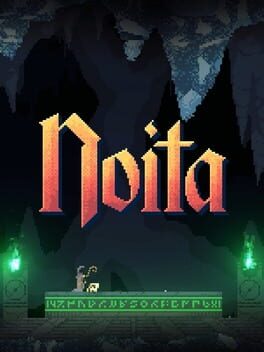Noita calls itself “The Falling Sand Roguelite”, a description which will probably only make sense to people who spent a lot of time playing flash games. For those of you who didn’t, “Falling Sand” refers to a genre of simulation sandboxes where you spread around particles of various substances, like water, oil, or sand, and play with their interaction. You watch as oil separates itself from water, which you can then set alight, and then smother with sand. There isn’t a goal to accomplish, the reason to play is simply for the joy of experimentation. Noita builds its worlds around this concept, with every pixel of the environment having simulated physical properties, which you can manipulate using the random magical abilities you find along your journey. Your goal is to traverse a series of biomes, fighting increasingly stronger enemies until you reach a tough-as-nails final boss. Even in this small summary though, you may have noticed the disagreement between each of its genre halves. If progression is done by defeating a linear set of enemies, why is it mixed with a genre about freeform experimentation? Not only does the linear difficulty structure incentivize players to only create wands that kill enemies as quickly as possible, the randomness of the magic means the map generation always has to include a freely accessible exit that doesn’t require magic at all. Most of the time, you’re just quick-firing boring magic missiles or arrows, leaving all the fun interactivity essentially as window dressing. Not only that, but taking risks with more complex wands is actively disincentivized by how fragile your character is, when accidentally hitting yourself is often a one-shot kill, leaving you with no way of enjoying that wand you were so lucky to craft. Confusingly enough, this falling sand game not only lacks a sandbox for experimentation, but it actively discourages you from experimenting much at all. It’s no wonder that some of the top mods on the Steam workshop are the ones that add testing rooms and custom wand spawning, giving players a way of actually enjoying the potential of the robust simulation. This is one of the rare times I’m happy about a game being heavily modded, because the beauty of all the elemental interactions is something more people should experience, and I’m glad there’s a way to do so without sinking hours into mediocre roguelike randomness.
